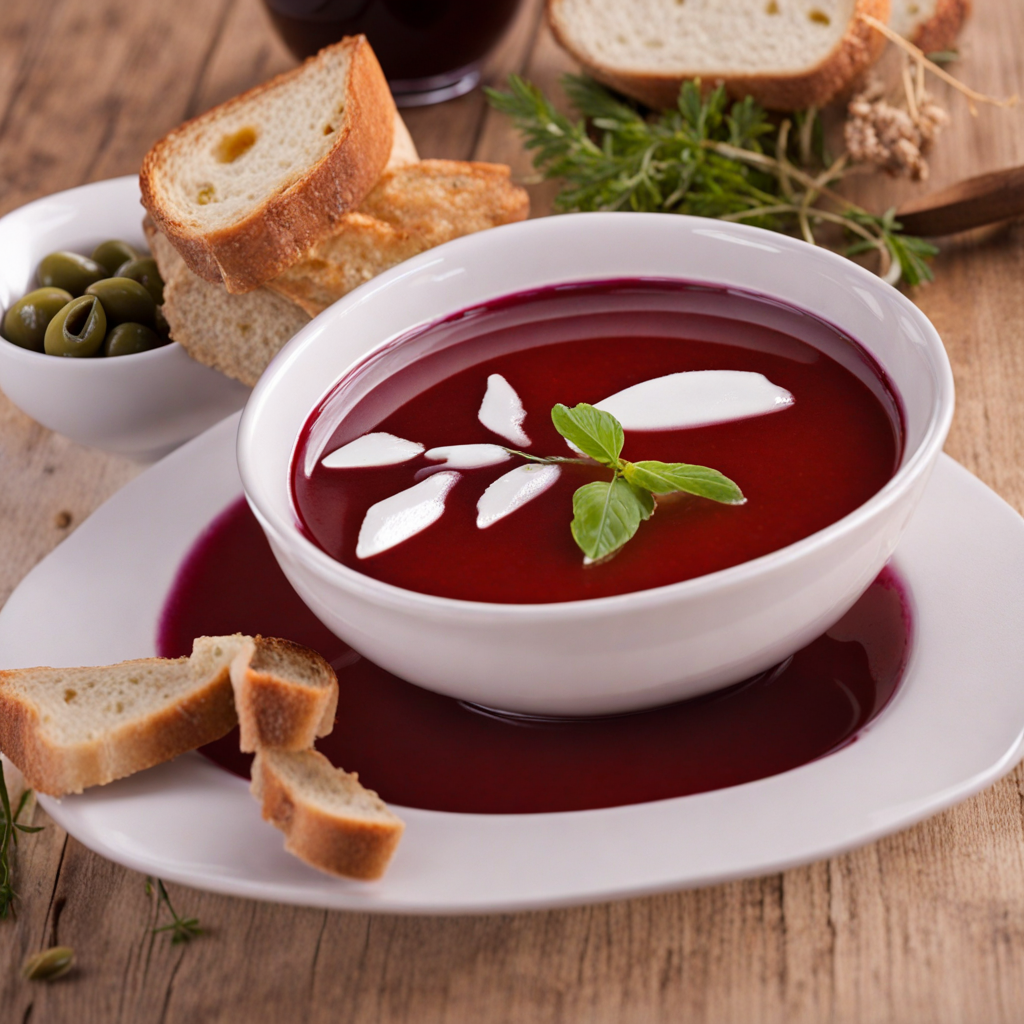Istrian Soup
Istrian Soup, known as 'Istarska supa', is a traditional Croatian dish that embodies the rich culinary heritage of the Istrian region. This rustic soup is a delightful amalgamation of flavors, showcasing the region's abundant natural ingredients. Typically prepared with a base of homemade bread, the soup is infused with a robust broth made from meat, often including beef or pork, along with a medley of vegetables such as onions, carrots, and potatoes. The use of local herbs like parsley and bay leaves adds depth and aromatic quality to the dish, making each spoonful a comforting experience. The unique twist that sets Istrian Soup apart is its distinct seasoning with a generous splash of red wine and a drizzle of olive oil, both staples of the Istrian diet. The wine not only enhances the flavor profile but also gives the soup a rich, velvety texture, while the olive oil adds a smooth finish. Additionally, a sprinkle of grated cheese on top, often a local variety such as Škripavac, provides a savory contrast that beautifully complements the soup's warmth, making it a hearty meal ideal for colder weather. Istrian Soup is more than just a dish; it's a celebration of the region's agricultural bounty and culinary traditions. Often enjoyed during family gatherings or festive occasions, this soup invites diners to experience the essence of Istria with each bite. It encapsulates the heartwarming spirit of Croatian hospitality, inviting you to gather around the table and savor the flavors of this vibrant culinary landscape.
How It Became This Dish
The Engaging History of Istarska Supa: A Culinary Treasure from Croatia #### Origins: A Soup Born from Tradition Istarska supa, a traditional soup from the Istrian Peninsula in Croatia, is a dish steeped in history and cultural significance. Its origins can be traced back to the rustic kitchens of Istria, where local ingredients and simple cooking methods laid the foundation for this beloved soup. The Istrian Peninsula, located at the crossroads of various cultures, has a rich tapestry of influences from Italian, Slovenian, and Croatian culinary traditions, all of which have contributed to the evolution of Istarska supa. Originally, Istarska supa was a peasant dish, created to utilize leftover bread and other available ingredients. The soup's simplicity is part of its charm; it embodies a philosophy of frugality and resourcefulness. The main components—stale bread, garlic, olive oil, and wine—were common in the diets of rural families, making the soup an accessible and practical meal. Historically, bread has been a staple in Croatian cuisine, and its use in soups like Istarska supa reflects the agricultural lifestyle of the region. The soup is often flavored with local herbs and spices, showcasing the Istrian landscape's bounty. The inclusion of wine, particularly the region's renowned Malvasia, not only enhances the soup's flavor but also highlights Istria’s long-standing winemaking traditions, which date back to ancient Roman times. #### Cultural Significance: A Communal Dish Istarska supa is much more than just a meal; it represents a deep cultural connection among the people of Istria. Traditionally served during family gatherings and community celebrations, the soup is often associated with hospitality and warmth. It is not uncommon for families to prepare large pots of Istarska supa to share with friends and neighbors, creating a sense of unity and belonging. The soup is particularly popular during the colder months, serving as a comforting dish that brings people together. Its preparation often involves multiple generations of a family, with children assisting their parents and grandparents in the kitchen. This practice not only preserves the recipe but also passes down the cultural heritage and stories associated with the dish. In Istria, food is a vital part of social interactions and cultural celebrations. Istarska supa is often served at festivals, weddings, and other communal events, symbolizing abundance and the importance of sharing. Its presence at these gatherings is a reflection of the region's values, where food plays a central role in creating lasting memories and forging connections. #### Development Over Time: A Culinary Evolution As the world has evolved, so too has Istarska supa. While the traditional recipe remains beloved, the soup has also adapted to contemporary tastes and culinary trends. Chefs and home cooks alike have experimented with variations, incorporating new ingredients and techniques while maintaining the essence of the dish. In recent years, the rise of the farm-to-table movement and a renewed interest in traditional cooking methods have led to a resurgence in the popularity of Istarska supa. Local restaurants and culinary festivals celebrate this dish, often showcasing it alongside other regional specialties. Chefs may use artisanal bread, locally sourced garlic, and organic olive oil to elevate the traditional recipe, offering diners a taste of authentic Istrian flavors. Furthermore, the soup has gained recognition beyond the borders of Croatia. As Istria has emerged as a popular tourist destination, culinary enthusiasts from around the world have been introduced to Istarska supa. Cooking classes, food tours, and gastronomic festivals have become popular ways for visitors to engage with local cuisine, and Istarska supa is often featured prominently in these experiences. #### Contemporary Interpretations and Global Appeal Today, Istarska supa can be found on menus in various forms, from rustic family-style servings to more refined presentations in upscale dining establishments. Contemporary chefs may infuse the soup with modern elements, such as truffle oil, fresh herbs, or seasonal vegetables, while still respecting its traditional roots. This balance between heritage and innovation is a testament to the dish's versatility and enduring appeal. The global interest in Mediterranean diets, which emphasize fresh ingredients and healthy cooking methods, has also contributed to the soup's popularity outside of Croatia. As people increasingly seek out authentic culinary experiences, Istarska supa stands out as a quintessential representation of the Mediterranean lifestyle—simple, wholesome, and deeply rooted in tradition. #### Conclusion: A Dish of Resilience and Connection Istarska supa is more than just a delicious soup; it is a vibrant reflection of the Istrian way of life. Its origins in peasant cooking, cultural significance as a communal dish, and adaptability to modern culinary trends highlight the resilience of this traditional food. As it continues to evolve while retaining its core elements, Istarska supa serves as a bridge between generations, connecting the past with the present and inviting people to gather around the table. In Istria, the act of sharing a bowl of Istarska supa transcends mere nourishment; it fosters relationships, cultivates a sense of community, and celebrates the rich cultural heritage of the region. Whether enjoyed in a cozy family kitchen or a bustling restaurant, Istarska supa is a cherished symbol of Istria that invites all who partake to savor not just its flavors but the stories and traditions that accompany it. As the world continues to embrace the beauty of culinary diversity, Istarska supa stands as a testament to the power of food to connect us all.
You may like
Discover local flavors from Croatia







